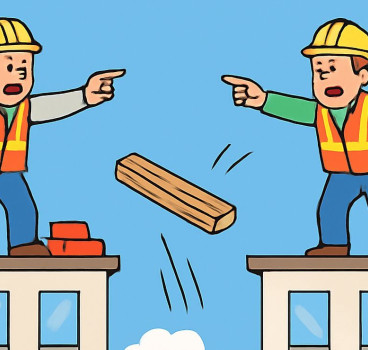An Aerial View of the Future - Drones in Construction
There is an aerial revolution happening across the globe. Drones have emerged as a highly viable commercial tool with applications in numerous sectors, most notably, construction. This isn't surprising, as their benefits range from on-site safety to a level of project monitoring which wasn't previously possible.
A market set to be worth billions over the coming years, there's no denying the unstoppable rise of commercial drones. Read on to find out how these flying cameras are revolutionising everything from workflow to safety.
DRONES IN CONSTRUCTION
Industries ranging from agriculture to entertainment and media are taking full advantage of the benefits drones offer. However, it's clear that one of the most rapidly growing sectors is infrastructure development which includes construction. The chart below shows which industries are the largest adopters of commercial SUAs (Small Unmanned Aircraft) according to PwC and how much of the market they control.
UK CONSTRUCTION COMPANIES EMBRACE DRONES
The success of drones within the construction sector is down to savvy early adoption by numerous high-profile companies – see below for examples of big-name firms currently using drones as part of their offering…
HOW ARE DRONES USED ON A CONSTRUCTION SITE?
In the construction industry, drones provide easy access to large or difficult sites as well as complex or tall structures. They can gather aerial data, mapping information and images used for:
THE FUTURE OF CONSTRUCTION
Find out what the future of construction looks like due to the rise of smart solutions, automation and drone usage.
Drones are available on Amazon: Click Here
BUILDING INFORMATION MODELLING (BIM)
BIM is the process of creating and managing information on a construction project across its lifecycle. It creates a shareable digital description of every aspect of the structure which all necessary stakeholders can update. The UK is at the forefront of this methodology which is being hailed as a ‘digital revolution' for the construction industry. Drones contribute to this approach in various ways including…
AUTOMATED CONSTRUCTION SITES
In Spring 2018, leading Chinese manufacturer DJI announced the largest ever order of commercial drones. Partnering with US tech firm Skycatch, this is an unprecedented shipment that sets a benchmark for construction firms around the world to take note of. Japanese construction giant Komatsu will receive 1,000 aircraft to help survey and monitor their projects.
There are also plans in place for these drones, known as the ‘Skycatch Explore1' to control robotic construction vehicles. If successful, this could pave the way to a fully automated construction site.
MARKET OVERVIEW
Regardless of sector, drones are big business. Countries across the globe are pouring investment into this relatively nascent technology. The hope is that it can bring revolutionary change across industries. Find out who is leading the way with our map of global drone investment.
THE LAW
As of Spring 2018, the UK government released a new set of regulations concerning the use of drones. The bill's intention is to increase overall drone safety while ensuring that Britain remains at the forefront of drone tech development. These measures also seek to expand their use with businesses and infrastructure.
- Drones over 250g will have to be formally registered.
- Drone pilots will have to sit a safety awareness test before they're allowed to fly.
- The police will have powers to ground drones if suspected of a criminal activity or unsafe flying. They will then be able to seize the drone parts for evidence.
- Drone pilots will have to be able to present their registration documents if requested by the police.
- Drone pilots will have to use apps to ensure their planned flights are safe and legal. Restricted areas will be easier for pilots to view such as schools and military bases.
- Drones may be completely banned from flying near airports or over 400ft.
- Geofencing development through a government, CAA and NATS (National Air Traffic Service) collaboration. This will help pilots comply with the guidelines.
There are exemptions to these guidelines for commercial operators. However, they must speak to the CAA on a case-by-case basis to lay out their intended use case and how they plan to ensure on-site safety.
THE ANATOMY OF A COMMERCIAL DRONE
There are many options available for businesses looking to purchase a commercial drone. See below for the types of equipment available and how they benefit a range of industries including construction.
This guest post haas been provided by www.roof-stores.co.uk
Additional Blogs

Construction’s obsession with blame instead of learning
Construction is one of the most technically advanced industries in the built environment, yet culturally it often behaves like one of the least reflective. When things go wrong and they frequently...
Read moreHow risk Is routinely pushed down the supply chain
Risk is an unavoidable part of construction. Every project involves uncertainty around ground conditions, weather, design coordination, procurement, labour and programme. Yet while risk is inherent,...
Read more

What if Building Control went fully digital?
Building control governs structural integrity, fire protection, energy efficiency, accessibility and countless other aspects of design and construction. Historically, this process has been highly...
Read more